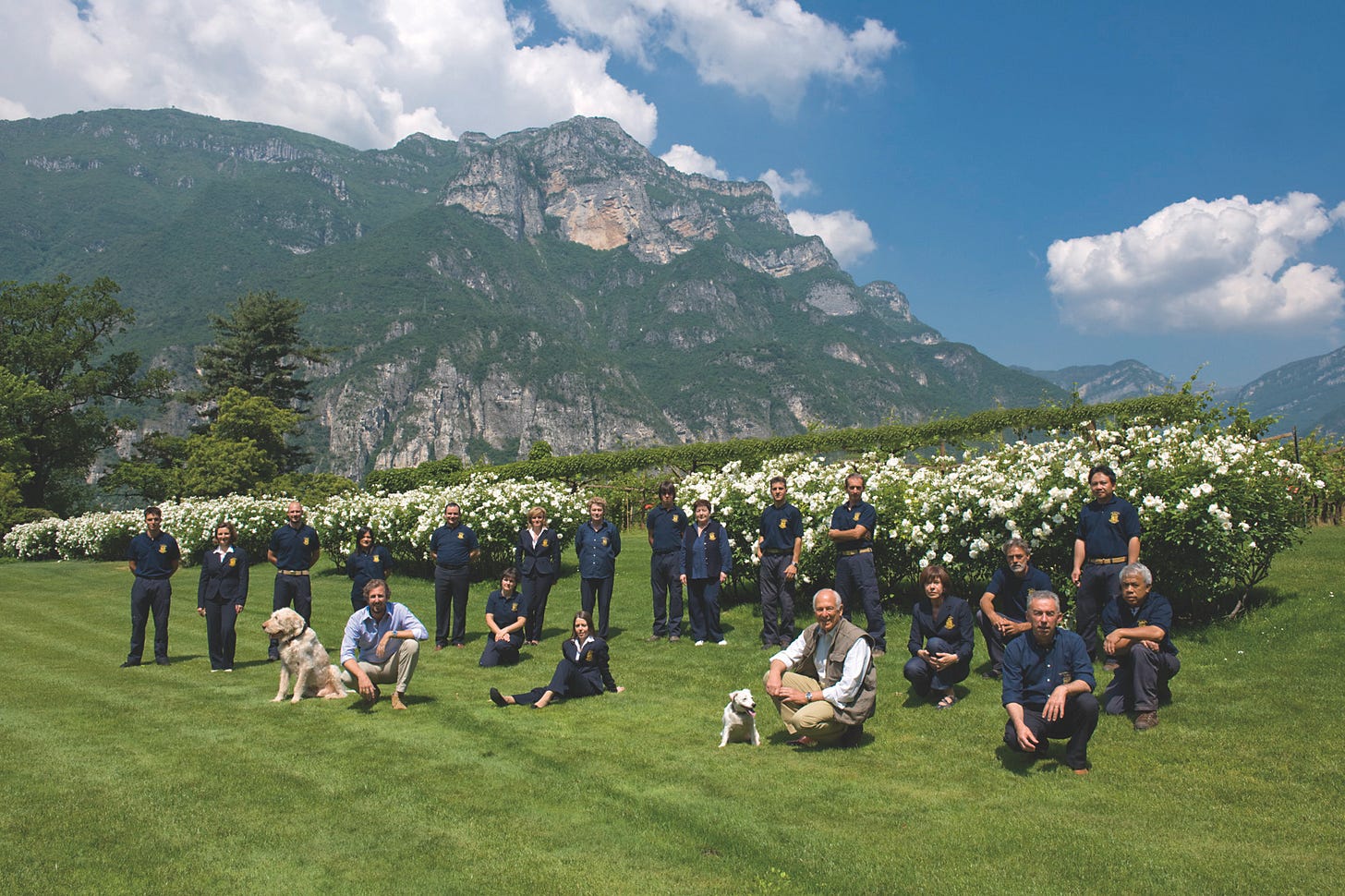A case of mistaken identity at San Leonardo has worked out brilliantly.
Ownership of the property by the Gonzaga family dates back to the 1700s. But, it wasn’t until recently the family realized the specifics of its flagship blend.
In 1215, San Leonardo started as a monastery. By the 1700s the Gonzaga family took ownership of the property and offered food and overnight accommodations to travelers. San Leonardo owner Anselmo Guerrieri Gonzaga is charmed by the history of the estate.
“When you enter San Leonardo, you immediately feel as though you’ve stepped into a world where time slows down, and values often forgotten come to the forefront,” Gonzaga said. “The beauty of nature has always been very important to my father and me. My father, in particular, dedicated his life to creating what he called ‘the garden of vineyards.’ Today, you can admire not only vineyards in perfect condition but also a collection of thousands of roses that embrace not only the vineyards but also the gardens and vegetable patches.”
Gonzaga traces the roots of carmenere back to his grandfather who wanted to test out the variety in the estate in the late 19th century. In the late 1940s it gained popularity in the Triveneto region and wineries started planting what they believed was cabernet franc.
In 1989 his father bought more cabernet franc to match what he thought was the variety that thrived at the estate. After Professor Attilio Scienza and former winemaker Giacomo Tachis investigated, they discovered “their cabernet franc” was actually carmenere.
“This grape has always been, and still is, the cornerstone of our production,” Gonzaga said. “The element that gives our wines their deepest identity. Today, we are dedicated to developing a clonal selection, the result of five years of work, to preserve the unique character of this grape and ensure its legacy for the future.”
With blue fruit and coffee on the nose the San Leonardo Villa Gresti IGT Vigneti delle Dolomiti 2019 ($40) developed flavors of plum, cassis, vanilla and cigar wrapper spice.
The San Leonardo Terre Di San Leonardo IGT Vigneti delle Dolomiti 2020 ($25) had rich black plums, wild game and dried violets on the nose, with plum, black currant, licorice and notes of singed rosemary. The blend was 60% cabernet sauvignon, 30% carmenere and 10% merlot.
“San Leonardo is a deeply artisanal estate, and in my vision, there is no growth planned in terms of volume,” Gonzaga said. “My dream is to preserve the profound identity of these wines, which is why I initiated clonal selections of Carmenère and am now extending this work to Cabernet Sauvignon. Our winemaking techniques, especially for red wines, must never change.”







